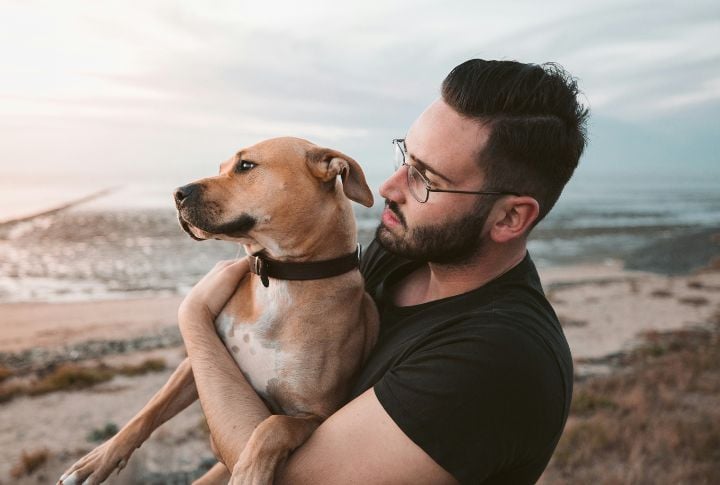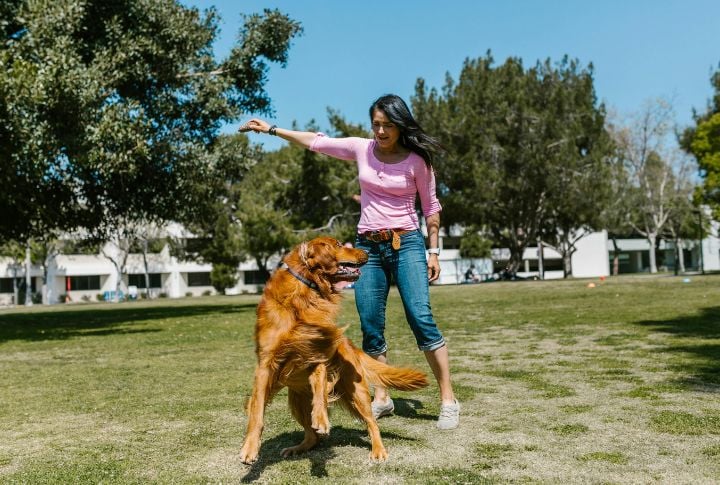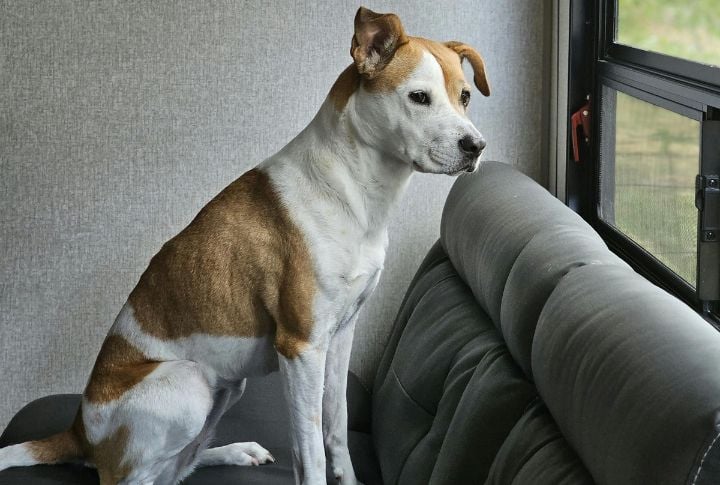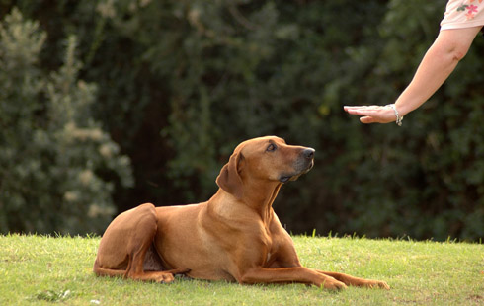15 Behaviors That Signal Your Dog Isn’t Paying Attention

Is your dog more focused on the squirrel outside than your commands? It can be frustrating when your pup seems distracted or uninterested. Understanding your dog’s behavior is key to improving communication and strengthening your bond. Keep reading to discover the signs that show your dog might not be paying attention.
Not Responding To Their Name

Your dog’s name should be music to their ears, but if they’re treating it like background noise, something’s up. A lack of response might mean they don’t associate their name with action—or they’ve learned that ignoring it works just fine.
Walking Away During Commands

A dog ignoring commands usually signals a lack of attention or understanding. It can happen if the command is too complex or your dog is distracted. Try using simpler commands and keep your dog focused by eliminating distractions during training. Consistency is key for improvement.
Lack Of Eye Contact

Dogs often avoid eye contact when they’re disengaged, uninterested, and more. Eye contact is a major sign of dominance or communication in the canine world. If your dog avoids looking at you, it’s likely not paying attention or it’s stressed. Work on building trust and keeping your dog focused during training sessions.
Looking Away Or Turning Away

Have you ever noticed your dog deliberately turning away from you mid-training? This behavior is often a sign of disinterest, stress, or confusion. Dogs are masters of non-verbal communication, and turning their head or body might indicate they’ve lost interest or feel overwhelmed.
Yawning When Asked To Obey

Ever notice your dog yawning right after you ask them to sit? Yawning and lip-licking aren’t just signs of tiredness—they can be stress signals. If your dog does this frequently during training, they might be feeling overwhelmed or unsure. So, keep sessions positive and short.
Ears Positioned Back Or Flat

A dog’s ears are like emotional antennas. Pinning them back or flattening them when you give a command is a sign that your pup might be uncomfortable, stressed, or tuning you out. Make training feel like a fun bonding experience rather than a strict boot camp.
Freezing Or Stiffening

A frozen, stiff dog is an unsure dog. When a pup goes statue-like instead of reacting, they’re likely confused or hesitant. Simplify commands and use clear, consistent cues to make things easier for them. Adding a reward they can’t resist never hurts, either.
Responding Only When A Treat Is Visible

Treats are great motivators, but if your dog only listens when they see the snack in your hand, you’ve got a problem. This means they’ve learned that obeying is optional unless bribery is involved. Start rewarding randomly instead of every time, so they respond even when food isn’t on the table (literally).
Following Commands Only In Certain Locations

Your dog is a star student in the living room but suddenly forgets everything at the park? That’s location-based listening. Dogs tend to associate commands with specific places, so practice in different environments. Gradually increase distractions to help them generalize their obedience.
Ignoring Physical Signals

Dogs don’t just listen to words—they read body language, too. If your dog is ignoring hand signals or gestures, they may not have learned to associate them with commands. Train with both verbal and physical cues to ensure they understand what’s expected, no matter the situation.
Slow Reaction To Known Commands

A sluggish response to “sit” or “come” can mean your dog is hesitant, distracted, or just seeing how much they can push the boundaries. Reinforce commands with enthusiasm and keep your energy high. Interestingly, dogs feed off your vibe, so if you’re excited, they will be too.
Showing More Interest In Surroundings

If your dog is too busy sniffing every leaf and squirrel to acknowledge you, their priorities are off. While distractions are natural, training should be rewarding enough to pull their attention back. Use a happy, animated voice and exciting rewards to make yourself more interesting.
Shifting Weight Away From Trainer

Dogs that subtly lean or shift away during training are quietly expressing their reluctance. This can be due to discomfort, uncertainty, or plain old disinterest. Make training a positive, engaging experience with plenty of encouragement and gradual challenges.
Disregarding Boundaries

When dogs ignore boundaries, like jumping on the couch or running out the door, they aren’t following your rules. Consistent training is vital. Reinforce boundaries with positive reinforcement and redirect their attention when they break these rules.
Ignoring Treats Or Toys

Treats and toys are powerful motivators, but if your dog ignores them, they may not be paying attention. This can happen if your dog is overstimulated or simply isn’t motivated. Try switching up your rewards or adjusting your training environment to regain your dog’s interest.
Uninterested In Social Interaction

If your dog shows little interest in engaging with you during training sessions or seems aloof when you try to get their attention, they may be distracted or not fully present. Try using high-energy, interactive methods, like play or physical touch, to re-establish connection and encourage engagement.






